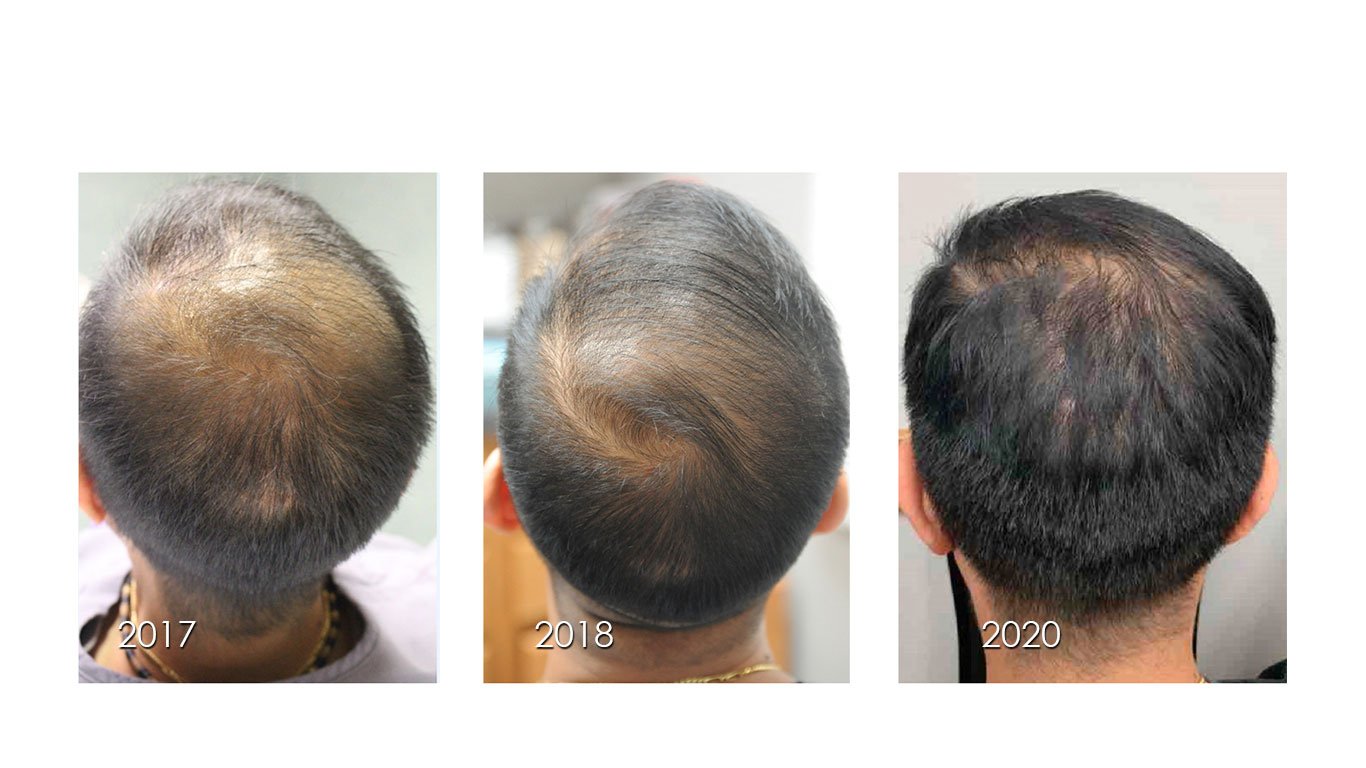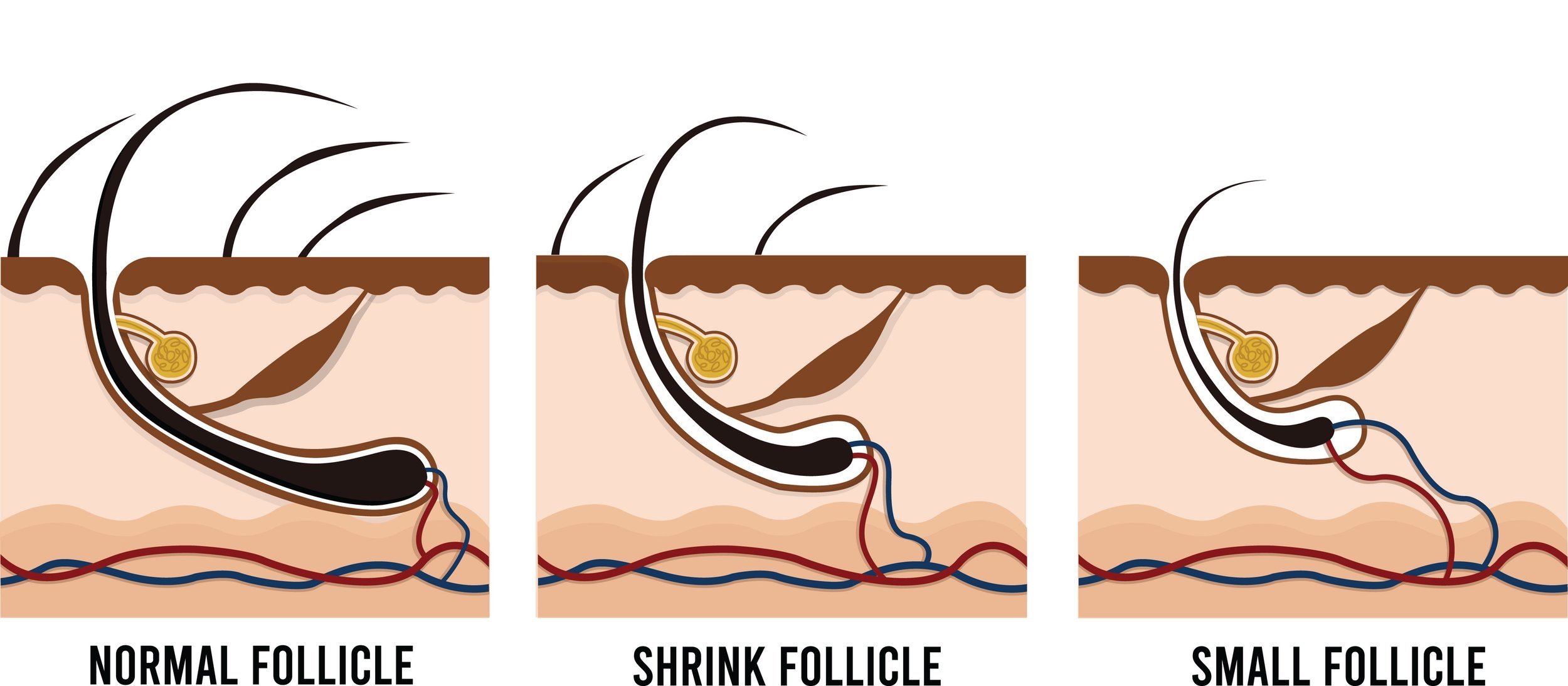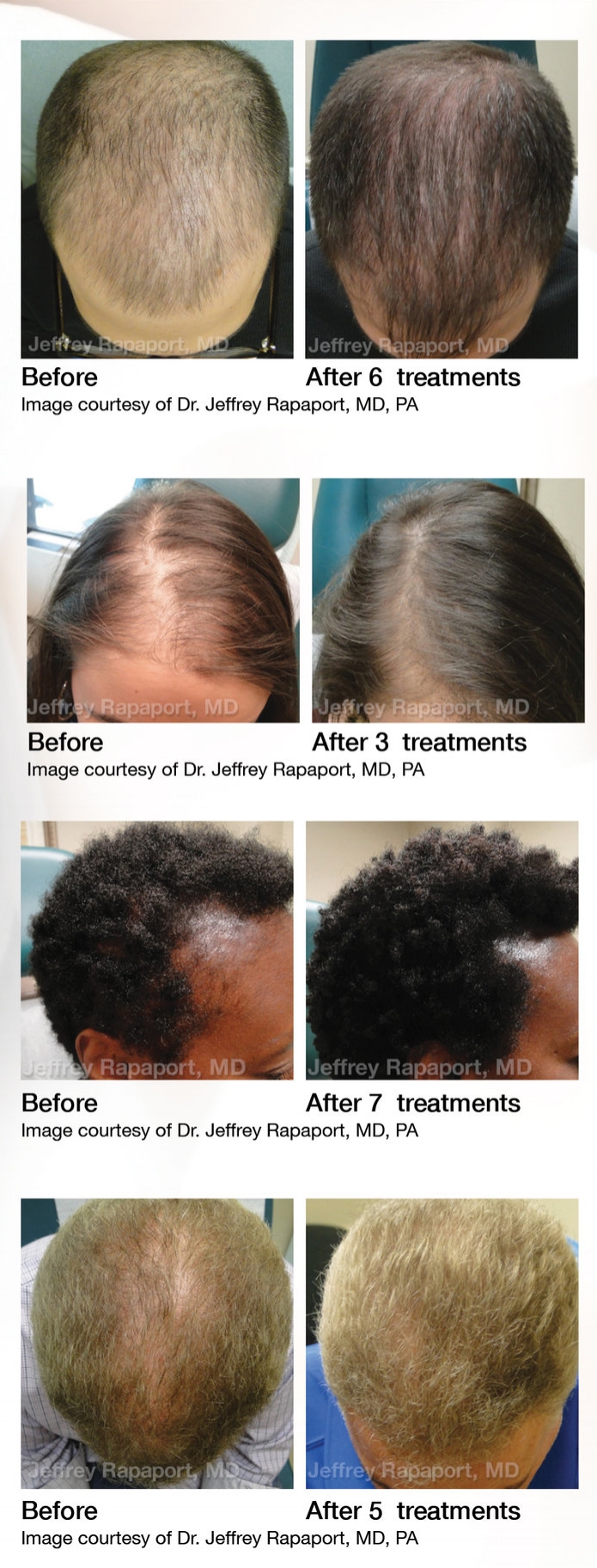PRP (PLATELET RICH PLASMA)
FOR HAIR THINNING
MesoHealth has been offering Platelet Rich Plasma to patients suffering from hair thinning since 2017. In fact, the first patient to receive a PRP treatment at MesoHealth was Dr. Garcia himself. The pictures above are Before and After treatment photos of Dr. Garcia’s hair between 2017 through 2020. It’s even better today.
The best candidates for PRP are those who have experienced hair thinning vs actual hair loss over the years. Hair thinning is most commonly due to an increase in sensitivity to dihydrotestosterone (DHT) as we age. This is also typically known as Pattern Baldness. DHT sensitivity typically doesn’t start to manifest until our mid to late 30’s, and it’s largely an inherited condition.
DHT causes viable hair follicles to shrink. We call this “Follicular Miniturization”. When follicles shrink, the diameter of the growing hair shafts subsequently decrease as well. A very common scenario we hear is when our female patients who state that the thickness of their pony tail has almost decreased in half over the last several years.
So it makes sense that the best candidates for PRP treatments are those who have viable hair follicles in the areas of treatment. Some of these hair follicles may be dormant while others are active but struggling. Although PRP will not fully reverse all hair thinning in patients, it has become one of the best non-surgical treatments to date to reverse follicular miniaturization resulting in hair growing more dense.
What exactly is PRP?
Platelet Rich Plasma (PRP) treatments have become well established in the medical community as a safe and effective way to revive dormant hair follicles.
Plateletes are specialized cells in your blood that are well known to produce several important growth factors.
Epidermal Growth Factor (EGF) stimulates skin and collagen production
Transforming Growth Factor (TGF) promotes growth of new blood vessels
Fibroblast Growth Factor promotes new blood vessels and granulation , both of which are important in tissue repair
Platelet-derived Growth Factor (PDGF) draws in macrophages and fibrobasts to injury sites and promotes collagen growth and proteoglycan synthesis
Collagen Stimulating Growth Factor
Keratinocyte Growth Factor (KGF) which optimizes conditions for healing and generation of new skin
HOW IS PRP PERFORMED?
PRP treatments involve the drawing the patients own blood (similar to a simple lab blood draw), centrifuging the blood to separate the platelets from the other blood componenents, and then re-injecting the high concentration of platelets back into the desired area of treatment (scalp for hair loss, facial skin for fine lines and wrinkles). Upon injection, the platelets are activated to release at least eight essential growth factors to help to revive dormant hair follicles (if used in hair restoration) or stimulate collagen production (if used in skin rejuvenation).
How many treatments will it take?
Most patients will require 3-4 treatments spaced-out about 6 wks apart. Afterwards maintenance treatments are recommended 1-2 times a year.
How long does it take to see results?
Typically takes 3-6 months to start seeing results. However, some patients may not see noticeable results for 6-12 months.
Are there side effects?
Because we are using the patient's own blood products (autologous transplant), there is very little risk of adverse effects other than rare chance of skin infection (with any procedure that uses needles), bruising, and temporary tenderness at the site of injections.
READY TO GET STARTED?
Call 517-336-1200 to schedule your consultation visit. We look forward to seeing you in the near future!
Need something a little more advanced than PRP?
Check out our affiliate clinic, Lansing Hair Restoration, to learn about hair transplants!






